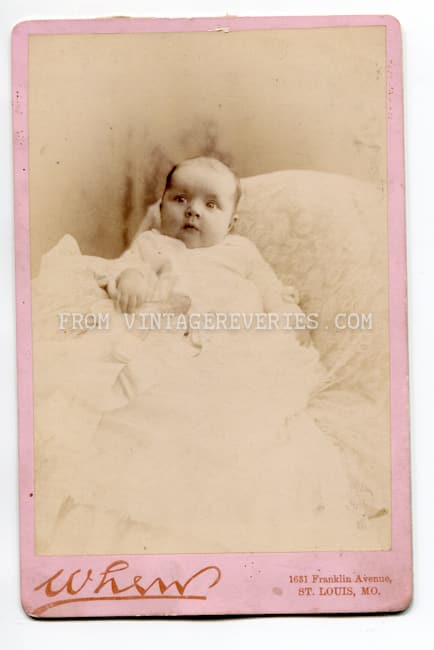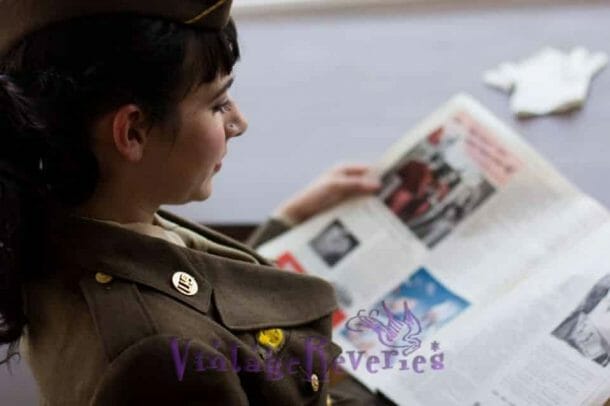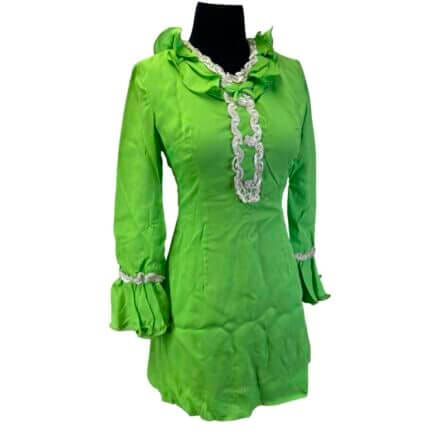
History of Photographers in St. Louis

I’ve been uncovering the fascinating history of photographers in St. Louis, learning about the artistry and craftsmanship these early photographers brought to the city. The intricate details on the backs of cabinet photos intrigue me, often just as much as the subjects themselves. These backs act like time capsules — advertising the studios where the pictures were taken, depicting their logos, and offering clues about the photographers’ artistry and the era in which they operated. During this deep dive into St. Louis’s photographic history, I’ve been fortunate to uncover work from several historic studios and individual photographers in the city.
Cabinet cards, a popular form of photography from the 1860s to the early 1900s, became a pinnacle of portrait photography during the Victorian era. These cards consisted of albumen prints mounted on thick cardstock, perfect for both long-term preservation and display. In a bustling city like St. Louis — a burgeoning hub of commerce, culture, and migration during the late 19th century — the popularity of photography mirrored the rapid transformations happening across society. Social occasions, family portraiture, and even evidence of personal success and wealth were all meticulously captured in these captivating relics.
So far in my scanning, I’ve uncovered photos taken by the following photographers, whose studios lined the streets of St. Louis during this golden age of photography. Here’s a glimpse into their businesses and their contributions to St. Louis’s rich photographic heritage:
- Henry Holburn of When Art Gallery on Franklin Avenue
Holburn’s Franklin Avenue gallery represents one of many such studios that sprang up to cater to the upper-class and middle-class clientele seeking everything from family portraits to artistic commemorations. Franklin Avenue was a growing commercial hub at a time when photography was becoming more available to everyday citizens. - J. Haas of 7115 S. Broadway
This studio reflects the transition of portrait studios from city centers to other neighborhoods, as St. Louis’s population grew and transportation networks like streetcars made more areas accessible. Haas likely catered to a diverse local community with his services. - Hammer at 1534 S. Broadway
Hammer’s works bring to mind the artistic ambition of photographers at the time, who often experimented with backdrops, lighting, and retouching techniques to offer unique, high-quality images. South Broadway was a dynamic area with affordable spaces for entrepreneurs like Hammer to establish themselves. - Boehl & Koenig at 707 4th Street
Studios like Boehl & Koenig were often strategically located near busy city squares where potential clients, including both urbanites and visiting rural residents, might pass by. Their studio likely specialized in capturing the optimism and formality of the late 19th-century St. Louis upper class. - Smith at 1115 Franklin Avenue
Franklin Avenue was a prominent location for photographers during this era. Many of the city’s earlier buildings constructed in the Federal style were juxtaposed against the growing number of Neo-Romanesque and Victorian structures — inspiring backdrops for photographers like Smith. - F.W. Voorhees at 323 Olive Street
Located downtown, Voorhees’s studio was at the heart of St. Louis’s commercial life. Downtown was undergoing massive growth during the late-19th century due to railway expansion and the city’s position as a crossroads for trade and culture. - Parsons Studio on 1407 Market Street
This studio likely catered to nearby bustling markets and shops, capturing the hardworking families settling in and around St. Louis’s Market Street area. The affordability of the cabinet cards may have made photography more accessible to individuals from varied social strata. - A. Rino at 1047 N. Grand Avenue
Situated in what was then yet another growing part of the city, Rino’s studio may have witnessed the fortunes of neighbors as the economy of St. Louis diversified and expanded beyond industrial prosperity. - Schweig & Cohl at 1715 S. Franklin Avenue
This studio serves as another reminder of how photography intertwined with the development of St. Louis streetscapes. The expanding photography market at the time sparked collaborations like this duo, offering refined portraits at competitive prices. - Scholten at 1314 Olive Street
Scholten’s Olive Street studio, located near prominent landmarks, would have been ideal for an emerging or affluent clientele, as Olive Street was an essential part of the cultural fabric of St. Louis. - Genelli at 923 Olive Street
Another Olive Street photographer, Genelli likely saw a steady stream of customers due to the prime location and the social importance of portraits at the turn of the century — a time when families sought ways to preserve their legacies. - New York Portrait Co. at 1426 & 1428 Franklin Avenue
An extension of what was likely a larger, multi-city brand, the New York Portrait Company brought an air of sophistication and professional expertise recognizable across the country. - Star Gallery at 208 S. 4th Street
Run by William Schiller, whose family still operates Schiller’s Camera on Manchester Road, this gallery highlights the legacy of photography as both an evolving art form and a multigenerational business in the city. Schiller’s descendants carry on this remarkable connection to photography to this day.
By comparing studio addresses with changes over time in the city’s directory and analyzing clothing styles in the images, I have been able to date most of these photos to between 1880 and 1910. This period marks an incredible era of industrial and population growth in St. Louis, especially following its hosting of the 1904 World’s Fair, when the city was truly coming into its own as a vibrant Midwestern metropolis.
These photographs not only document the people who lived through these transformative decades, but also act as small monuments to the technical and artistic evolution of photography. Studios like those mentioned above were equipped with innovations that made photography less cumbersome. By the 1880s, dry plate processing had replaced the laborious wet plate technique, and more sophisticated lenses allowed for higher clarity, making portrait photography simpler and more accessible.

























You must be logged in to post a comment.